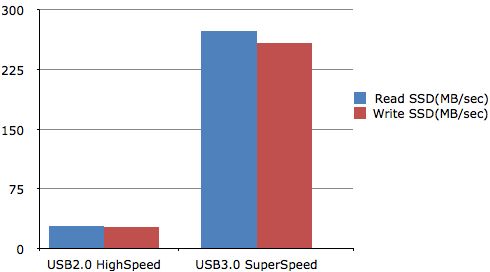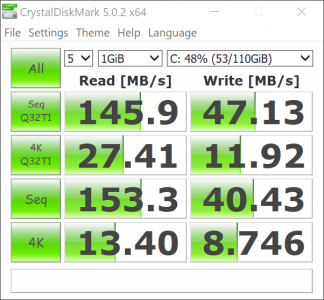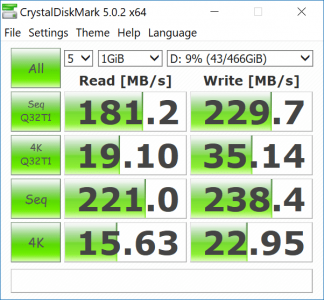According to these benchmarks USB 3.0 was faster than eMMC on these benchmarks.
USB 3.0 273MB/s read 258 MB/s write
eMMC 5.0 140MB/s read 40 MB/s write
Source :
ODROID | Hardkernel
SD/eMMC PERFORMANCE
The XU4 can boot from a MicroSD card or an eMMC module. An easy-access hardware switch is provided to select the boot interface (MicroSD/eMMC). The MicroSD interface supports the higher performance UHS-1 mode as well.
File access of a 512MB file (read/write) on three different storage options shows distinct performance differences.
The eMMC 5.0 storage is ~7x faster than the MicroSD Class-10 card in read tests. The MicroSD UHS-1 card is ~2x faster than the MicroSD Class-10 card in read tests. The MicroSD UHS-1 card provides a great low-cost option for many applications!
Following eMMC 5.0 test was done with 16GB model.
8GB model is slower than 16GB.
SD-class10 SD-UHS1 eMMC 5.0
Write speed (MB/s) 8.5 10.8 39.3
Read speed (MB/s) 18.9 35.9 140
USB 3.0 PERFORMANCE - using Samsung 850 Pro 256GB SSD
The XU4 has two standard-sized USB 3.0 SuperSpeed host ports.
To measure the USB 3.0 performance, we connected an SSD via a USB-SATA bridge JMS567.
We used the Samsung SSD 850 PRO 256GB model for this test.
USB 3.0 access speed is ~10x faster than USB 2.0 on the XU4!
USB storage performance Read SSD(MB/sec) Write SSD(MB/sec)
USB2.0 HighSpeed 27.6 26.2
USB3.0 SuperSpeed 273 258
Those eMMC results are not unlike Surface 3 eMMC benchmarks for sequential read/write 150 & 48 MB/s.
Also note the 4k speeds.






